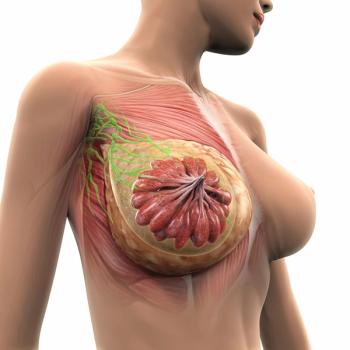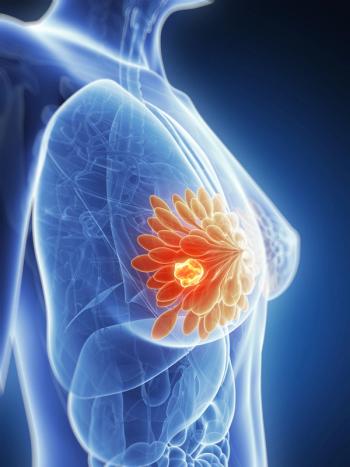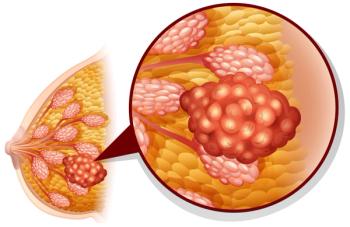
Axicabtagene Ciloleucel Shows OS Improvement in Large B-Cell Lymphoma
Data from the ZUMA-7 trial shows that age alone should not be a barrier of consideration of administering CAR T-cell therapy to patients with large B-cell lymphoma, says Marie José Kersten, MD.
Axicabtagene ciloleucel (Yescarta; axi-cel) showed an improvement in overall survival (OS) and progression free survival (PFS) in patients 65 years and older with second-line large B-cell lymphoma compared with standard of care, according to subgroup findings from the phase 3 ZUMA-7 trial (NCT03391466) presented at the
In the subgroup of patients aged 65 and older, the median OS in those receiving axi-cel vs standard of care was 43.5 months (95% CI; 20.9-not evaluable [NE]) and 19.5 months (95% CI; 12.3-NE), respectively (HR, 0.691; 95% CI, 0.401-1.190). In the subgroup of patients aged 70 years and older, the median OS in patients receiving axi-cel vs standard of care was 24.7 months (95% CI; 12.8-NE) and 11.2 months (95% CI; 6.1-NE), respectively (HR, 0.330; 95% CI, 0.135-0.809).
In the subgroup of patients aged 65 and older, the median PFS in patients receiving axi-cel vs standard of care was 28.6 months (95% CI; 5.1-NE) and 5.0 months (95% CI; 2.8-7.3), respectively (HR, 0.406; 95% CI, 0.230-0.715). In the subgroup of patients aged 70 years and older, the median OS in each arm was 11.4 months (95% CI; 4.1-NE;) and 2.7 months (95% CI; 1.7-5.0), respectively (HR, 0.206; 95% CI, 0.078-0.547).
“In the subgroup analysis, axi-cel as second-line therapy showed prolonged survival over standard of care in patients aged 65 years or older, including in patients aged 70 years or older,” said presenting author Marie José Kersten, MD, professor of hematology at Amsterdam University Medical Centers. “These findings confirm that age alone should not be a barrier for consideration of CAR T-cell therapy and support the use of axi-cel as a curative intense second-line therapeutic option for elderly patients with relapsed refractory large B-cell lymphoma.”
In the international phase 3 trial, patients with refractory large B-cell lymphoma or who had relapsed no more than 12 months after first-line chemoimmunotherapy were randomly assigned 1:1 to receive axi-cel or standard care, followed by high-dose chemotherapy with autologous stem-cell transplantation in patients with a response to the chemoimmunotherapy.2 Patients were able to receive cellular immunotherapy if they did not experience a response to standard of care. A total of 109 patients aged 65 and older were included in the subgroup analysis.
The primary endpoint of the study was event-free survival (EFS). Secondary endpoints included OS, PFS, and safety.
Improved OS in patients 65 years and older who received axi-cel was also associated with a greater proportion of naive T cells (HR, 0.369; 95% CI, 0.138-0.984).
Any-grade and grade 3 or higher adverse effects (AEs) of interest in the experimental arm vs control arm, respectively, were cytokine release syndrome (98% and 8% vs NE), neurological events (67% and 27% vs 25% and 2%), hypogammaglobulinemia (20% and 0% vs 2% and 0%), cytopenia (84% and 84% vs 82% and 76%), and infections (61% and 29% vs 38% and 16%). Death occurred in 51% of patients receiving axi-cel and 53% of patients receiving standard of care. Reasons for death included progressive disease (41% vs 36%), grade 5 AEs (4% vs 2%), new or secondary malignancies (2% vs 0%), and definitive therapy-related mortality (0% vs 2%).
References
- Kersten M, N, Farooq U, Rapoport A, et al. Improved Overall Survival with Axicabtagene Ciloleucel vs. Standard of Care in Second-Line Large B-cell Lymphoma Among the Elderly: A Subgroup Analysis of ZUMA-7. Presented at the 2023 American Society of Hematology (ASH) Annual Meeting and Exposition; December 9-12; San Diego, CA; abstract 1761.
- Locke FL, Miklos DB, Jacobson CA, et al. Axicabtagene ciloleucel as second-line therapy for large B-cell lymphoma. N Engl J Med. 2022;386(7):640-654. doi:10.1056/nejmoa2116133
Newsletter
Stay up to date on recent advances in the multidisciplinary approach to cancer.





















































































